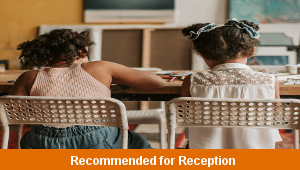Lesson Three – Angel Gabriel

This religious education teaching pack for the Foundation Stage gets the children to identify and sequence a part of the nativity story about what happened when Mary was visited by the angel Gabriel.
The class can select and combine materials to make a collage of one of the characters from the story illustrating what they might have said about what happened in a part of the nativity story.
Download this teaching pack including a lesson plan, classroom activities and an interactive presentation to identify and sequence a part of the nativity story about what happened when Mary was visited by the angel Gabriel
Activities in this teaching pack include a shared reading text to explore and and understand a key event in the nativity story about Mary and the angel Gabriel and a set of cards to identify and sequence a part of the nativity story about what happened between Mary and the angel Gabriel.
The interactive presentation gets the children to explore the sequence of a part of the nativity story about Mary and the angel Gabriel.
This lesson is part of a topic scheme of work to get the children to read and respond to the sequence of events in the nativity story by using drama, role-play and art and design projects. There are teaching activities for shared learning, differentiated worksheets to support independent learning and interactive presentations to introduce concepts and key skills.
-

Length Words
Practise using special vocabulary words to compare the lengths and sizes of objects found and used in different locations
-

Speaking Skills
Explain and model how to use voices clearly and expressively when interacting with others in different situations and scenarios
-

School Friends
Investigate, describe and model some of the special ways of providing practical, spiritual and emotional support to other pupils in the school
-

School Pictograms
Explore how to count and record the numbers of different pieces of school equipment that can be found in trays stored around the classroom
